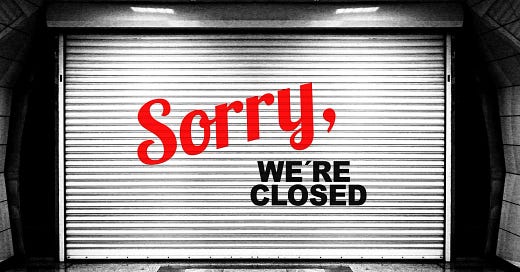Mergers and acquisitions (M&A) in higher ed are heating up. On its surface, it feels like a positive sign: innovation, growth, "bold moves." But if you look a little closer, not all M&A activity is created equal - and nonprofit leaders should be careful before getting too excited about every "opportunity" that crosses their desk.
In reality, there are two very different M&A tracks happening right now:
True M&A: Driven largely by private equity and major roll-up strategies. Think big money, aggressive buying, scalable assets.
Nonprofit M&A: Mostly nonprofits acquiring distressed institutions - colleges on the brink of closure, or already half-dead.
Today, I want to talk about that second track. Because while it may seem exciting for a mid-market nonprofit university to "expand through acquisition," the hard truth is this: Most of the colleges up for sale aren't dying by accident. They're dying by design.
The Lure of No-Money-Down M&A
Many nonprofit leaders see struggling colleges for sale and think, "What an opportunity! We can buy a campus for next to nothing. We can save these students. We can grow."
And I get it. The price tag looks good. The mission-driven rationale sounds good. The board loves the story.
But ask yourself: If this institution were truly valuable, wouldn't the real buyers - private equity, larger systems, elite brands - already have snatched it up?
The truth is, when a distressed asset comes knocking on your door, it's often because it already knocked on other better doors first.
Being offered a college isn't a compliment. It's a warning.
Emotional Buying vs. Strategic Buying
Higher education is an emotional business. We believe in legacy, mission, impact. And that's beautiful.
But M&A is a business decision, and distressed acquisitions can be money pits masquerading as growth plays.
When you buy a dying college, you aren't just buying its campus and programs. You're buying:
Years of deferred maintenance
Tarnished brand equity
Shrinking pipelines
Often, millions in hidden liabilities
You’re not acquiring a thriving engine - you're inheriting a rescue mission with uncertain odds.
And here's the harder truth: If the business in its current form isn't successful, what makes you think it will succeed under your leadership?
It will take far more than just strategy to turn things around. Acquiring institutions must be prepared to:
Cut, and cut deeply
Disrupt entrenched faculty governance
Face votes of no confidence, protests, and lawsuits
Gut program offerings
Shutter and sell buildings
Eliminate a significant portion of overhead, primarily personnel
So before you leap to take that next deal, ask yourself: Do we have the stomach to do what needs to be done to make this work?
Because if not, it's better to leave the deal on the table where it started.
The Reality Check
Here's the brutal truth: Some colleges aren't worth saving.
They didn't fail because of one bad president, or one bad year. They failed because they:
Were in oversaturated markets
Had outdated models
Lacked brand distinction
Missed major market shifts (online, adult learners, etc.)
Buying them won't fix that. You can’t scale a fundamentally broken model. You can’t just "rebrand" a structural mismatch.
A Smarter Approach to M&A
I'm not against M&A. Done right, it can absolutely be a growth lever.
But nonprofit leaders need to move with clear eyes and a tough mindset.
So here are four questions to ask yourself before buying a dying college:
1. If this school had true strategic value, why didn't deeper-pocketed players pursue it?
2. Are we inheriting an asset - or a liability?
3. Are we truly ready to transform it, or are we just excited about "buying something"?
4. How much will it cost to buy this institution (e.g., time, energy, money) vs. how much it would cost to build only the best of their offerings from scratch?
Bottom line
In this market, "something" is always for sale. That doesn't mean it's worth buying.
Growth by acquisition is powerful - but only if the asset strengthens your future, not just your narrative.
And for the asset to strengthen, you’ll likely need to be ruthless in identifying exactly where the value remains at the for-sale institution (e.g., specific program areas, unique accreditation, a key physical location, etc.) and be unabashed about cutting absolutely everything else.
It’s not to say there aren’t good institutions worth saving, but rather I’m just saying that actually saving them will require a lot more than just good will on the part of the acquirer (and more to come on that in next week’s newsletter…).
Because most of the colleges up for sale aren't dying by accident. They're dying by design.
About The Author
Seth is the founder and CEO of Kanahoma, a San Diego-based performance marketing agency on a mission to build a better agency for organizations building a better world.
You can learn more about who we are and what we do at www.Kanahoma.com.




The bit about if it were a good idea to acquire a distressed university that someone else would have done it already reminded me of the old joke:
Economist 1: Look, there’s $20 on the ground!
Economist 2: No there isn’t. If there were, someone would have picked it up already.
That said, however, I agree it's a pretty big red flag. Especially when university Boards and Presidents are often in denial about their situations and wait to seek an acquirer until it's no longer viable.